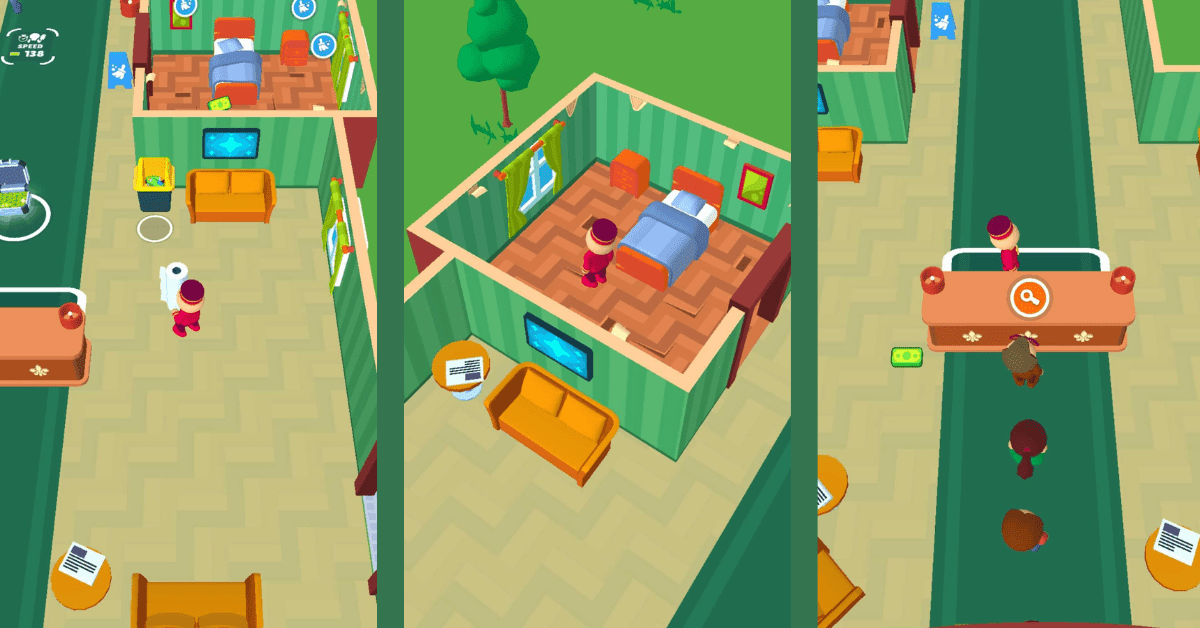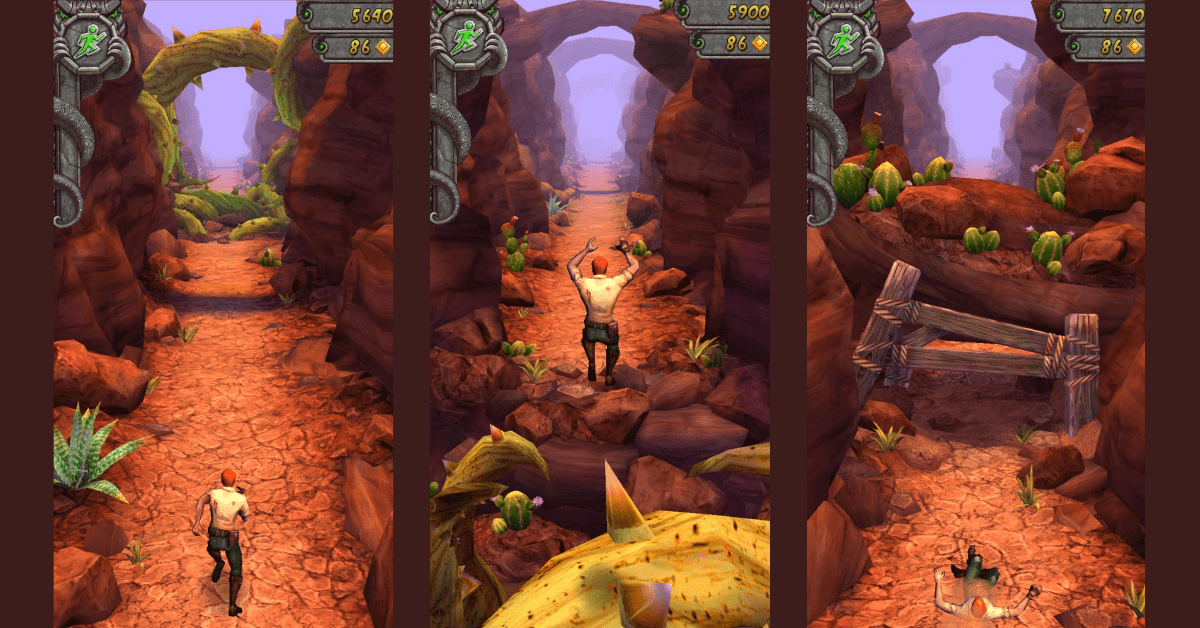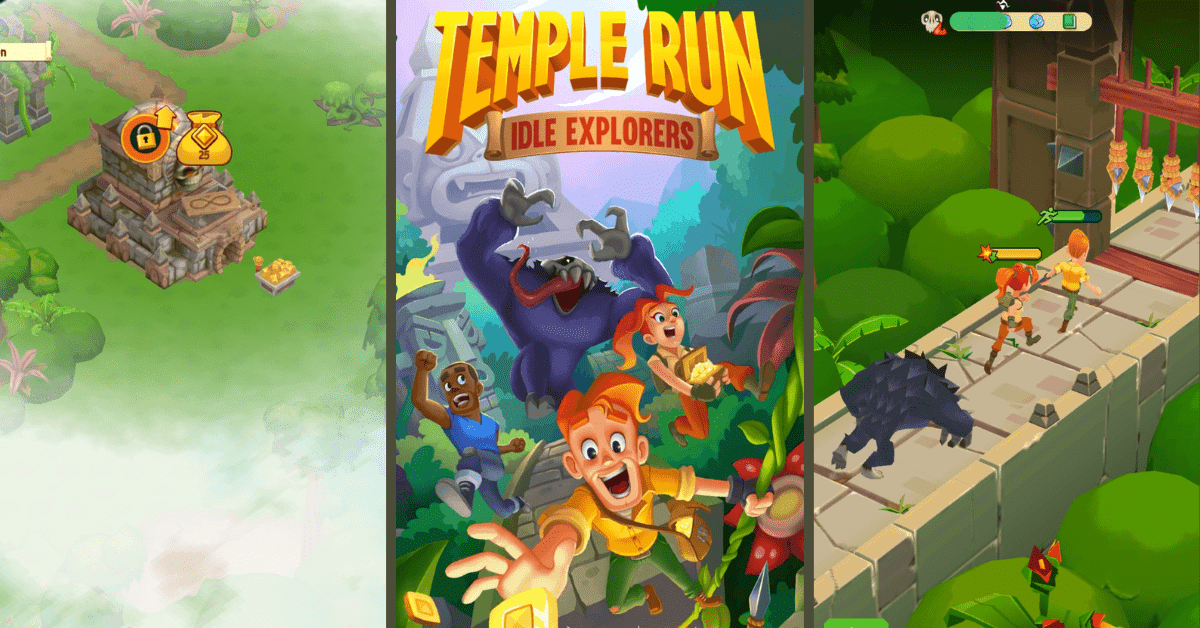If you’ve ever wondered what it takes to create a chart-topping mobile game that not only captivates casual gamers but also stands as a case study in effective monetization and user acquisition, look no further. My Perfect Hotel by SayGames, launched globally in August 2022, has reached more than 50 million downloads. What’s more, it’s currently the most downloaded mobile game worldwide and has topped the charts in all key markets.
Here’s everything you need to know about it.
Data source: AppMagic, a leading mobile intelligence platform. Get 3 days of free access to all AppMagic’s features, as well as 10% off, by clicking on this link.
Unpacking the Game: Genres, Mechanics, and Features
My Perfect Hotel is a genre-blending experience that combines elements of arcade, simulation, and idle clicker genres. It can also be described as an arcade idle game, a hotel management simulation, a tycoon game, and a hybrid-casual game.
This fusion offers a unique proposition for players, making it more than just a classic idle clicker game where you tap and wait.
It’s similar to games like Hotel Empire Tycoon, Idle Supermarket Tycoon, Idle Inn Empire, and Burger Please, a game I recently analyzed.
Here’s a short overview of the main game mechanics, features, and progression systems that make My Perfect Hotel stand out from the competition.
Mechanics That Drive Engagement
The game mechanics in My Perfect Hotel are intricately designed to keep players engaged. Starting with a small hotel, players are responsible for every operational aspect, from the front desk to room service.
As the game progresses, upgrades and expansions become available, each adding a new layer of complexity.
Unlike traditional idle games, My Perfect Hotel demands active participation from players in customer service, adding depth and engagement.

Core Gameplay: Beyond Mere Tapping
The core gameplay revolves around resource management and strategic planning.
Players aren’t just aimlessly tapping; they’re making informed decisions on resource allocation, upgrades, and balancing customer service with growth. However, all of this is simplified to make it accessible to casual players.
The game offers a wide range of upgrade options, from room amenities to staff training, each of which impacts the hotel’s growth and profitability.
The Ladder of Progression
My Perfect Hotel employs a multi-tiered progression system that serves as the backbone of its engagement and retention strategy.
Players start with a modest establishment and gradually unlock new floors, amenities, services, and ultimately new hotels. Each milestone reached is more than just a numerical achievement; it’s a gateway to new gameplay elements and challenges.
As a result, the game stays fresh and interesting for prolonged periods.

Skill vs. Time: Balancing the Equation
One of the standout features of the game’s progression system is the balance between skill and time. Players can choose to actively engage with the game to speed up their progression or take the idle route, allowing the game to progress in the background.
This dual-pathway system ensures that both active and passive players find value, a crucial aspect to consider for maximizing engagement across different player types.
Dynamic Difficulty: Keeping Players on Their Toes
As players advance, the game introduces new challenges and complexities, from managing larger crowds to dealing with customer complaints and equipment malfunctions.
This dynamic difficulty ensures that players never find the game too easy or monotonous and ensures that players of all skill levels remain engaged.

Additional Features
The game also incorporates additional features like daily challenges and seasonal events. These elements not only keep the gameplay fresh but also encourage players to return time and time again.
All of these features play a role in the success of My Perfect Hotel. But, as you probably know, making a fun game is not enough to reach the top charts.
Here are key factors that made My Perfect Hotel a trending game.
How Did My Perfect Hotel Become a Hit Game?
According to Yegor Vaikhanski, CEO of SayGames, the company’s continuous investment in publishing tools and growing live operations expertise has shown positive results. This allows them to operate and market global hits like My Perfect Hotel, indicating that the game’s popularity is also backed by strong operational and marketing strategies.
Iteration was key, according to Anton Volnykh, Chief Publishing Officer at SayGames. The publisher worked on UA and monetization improvements for months, and it shows.
This also emphasizes the difference between hyper-casual and hybrid-casual product models. The former is based on short life cycles while the latter is based on an iterative approach and making improvements over time.
Here are some more details about My Perfect Hotel’s monetization and user acquisition strategies.

Hybrid Monetization Strategy
My Perfect Hotel employs a hybrid monetization strategy that combines in-app ads with purchases.
Here’s what it boils down to.

When it comes to ads, My Perfect Hotel features frequent forced interstitial ads and plenty of rewarded ad opportunities that allow players to get more in-game currency or various boosts.
Essentially, the rewarded ads allow players to make progress faster and this is their main appeal, especially for idle games.
On top of that, players can make various in-app purchases.

The no-ads option for $10 is probably the most popular one, as it gets rid of forced ads, which tend to disrupt the player experience due to their frequency. It’s also the first one players get – the no-ad purchase comes up during the first couple of minutes of gameplay.
Players can also buy various forms of in-game currency, which can be used to speed up progression, purchase exclusive items, or unlock premium features.
The Hotel Pass is an interesting addition to the game’s monetization model and it works like a battle pass. There are Pro and Elite options and they offer players extra rewards (game currencies) on top of removing forced ads and banner ads. This not only accelerates the player’s progress but also adds a layer of exclusivity.

This combination of various monetization techniques resulted in more revenue for SayGames. According to AppMagic, the game earned more than $400,000 in revenue just in August, a significant improvement from the previous months.

Scaling User Acquisition
SayGames also scaled their user acquisition, which resulted in a download boost in August, surpassing 6 million downloads.
The game employs a robust paid advertising strategy, utilizing ad networks like Facebook, Google AdWords, and Unity. These ads are highly targeted, focusing on users who have shown interest in similar games or genres.
According to AppMagic, the top markets for these ads are the United States, Indonesia, Japan, Turkey, the Netherlands, the United Kingdom, Switzerland, and Poland.

When it comes to ad types, the majority of My Perfect Hotel ads are video ads. In terms of content, they’re basic gameplay ads. They showcase core gameplay, mechanics, and features in a straightforward way, without any bells and whistles.
It seems to work well.
However, in the long run, the game could benefit from more variety when it comes to ads, as well as zoning in on player motivations.
Cross-Promotion: The Network Effect
Being part of the SayGames portfolio, My Perfect Hotel also benefits from cross-promotion within other games from the same publisher. This not only drives user acquisition but also encourages players to engage with multiple titles, increasing the lifetime value of each player.







Comments